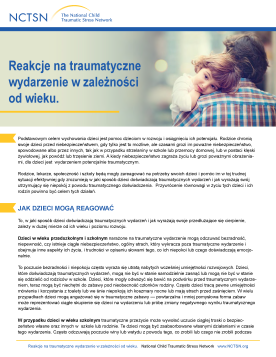
NCTSN Resource
Resource Description
Describes how young children, school-age children, and adolescents react to traumatic events and offers suggestions on how parents and caregivers can help and support them. Translated in 2023.
Published in 2024